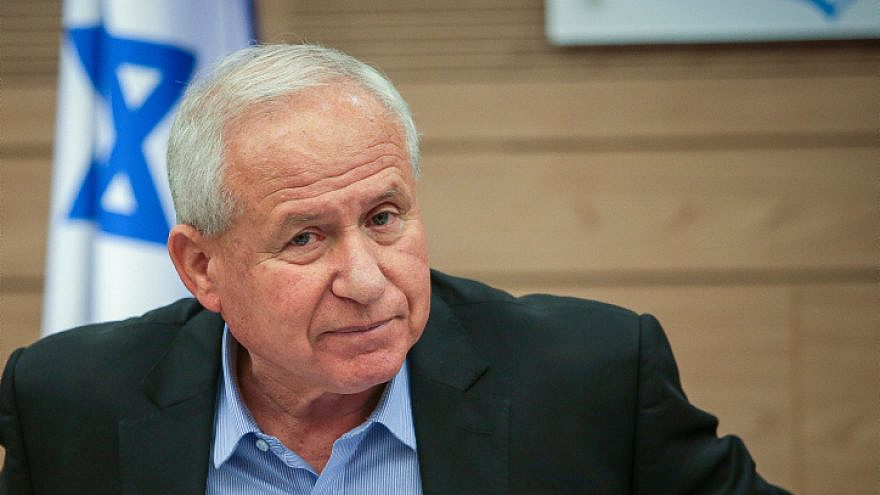Passover night, March 27, 2002: The Dichter family home in Ashkelon is full of family and friends. The phone rings.
“I answered the phone, and the voice on the other end of the line said ‘there’s been an explosion at the Park Hotel in Netanya. We’re checking to see if it was cooking gas,’ recalls Avi Dichter, who at the time was the director of the Israel Security Agency (Shin Bet). “I was familiar with the routine of reporting a ‘gas explosion.’ People found it difficult to report that there had been a suicide bombing, so when they didn’t yet have proof, they would usually say, ‘there may have been a gas explosion.’
Dichter, 69, has many stories from those dark days. The Likud MK and former public security and deputy defense minister was appointed head of the Shin Bet in May 2000. The Second Intifada erupted in October of that year, claiming hundreds of Israeli lives. Israel’s response, 2002’s “Operation Defensive Shield,” dealt a lethal blow to the terror infrastructure in Judea and Samaria.
To comprehend how “Operation Defensive Shield” came about, says Dichter, you have to go back to August 1993, when the Oslo Accords were signed.

“The Oslo Accords were finalized without the knowledge of the defense establishment, which had no idea that the government was about to sign the agreements. At the time I was head of the Southern District at the Shin Bet and 90% of the burden fell on me. We had great expectations for cooperation from the other side because we knew everyone, from the head of the preventive security apparatus, Mohammed Dahlan, through to Moussa Arafat, who was chief of military intelligence. They were people that I had sat down with just like we are sitting together now.
‘It took a while for the penny to drop’
“It’s like when you marry a woman, and the next day you find out that she isn’t who you thought she was. When the terrorist attacks began, we supplied them [the P.A.] with intelligence so they could take care of things. But instead of taking care of things, they were looking for where we got our intelligence from. After [Prime Minister Yitzhak] Rabin’s murder [in November 1995], when Shimon Peres was prime minister, we had a meeting with [PLO Chairman] Yasser Arafat. Peres asked me for a breakdown of the situation. I said that the man behind the suicide bombings was Mohammed Deif,” he says, naming the head of Izzadin al Qassam Brigades, Hamas’s “military wing.”
“Arafat looked at [P.A. security chief] Mohammed Dahlan, who was sitting next to him, and said, ‘Mohammed who?’ Dahlan said, ‘The guy I told you about.’ Arafat replied, ‘You never told me anything.’ We all knew he was lying. The most frustrating thing was that the Palestinian Authority was doing absolutely nothing to stop the violence.”
Q: Did you try to understand why?
A: The Oslo Accords failed and that was 100% the Palestinian Authority’s responsibility. From the start through to “Defensive Shield.” Because when the intifada broke out, on the other side, Ehud Barak was prime minister and after him, Arik Sharon, both people with a military past, serious people who knew how to move things.
There was heavy American pressure to try and reach understandings between the sides. President Bill Clinton came here together with his secretary of state, Madeleine Albright, then with President Bush and Colin Powell, and the head of the CIA, George Tenet; they were all personally involved. I spoke with them more than I spoke with my wife, but nothing stopped the Palestinians. It took a while for the penny to drop that Arafat had no desire to thwart terrorism.
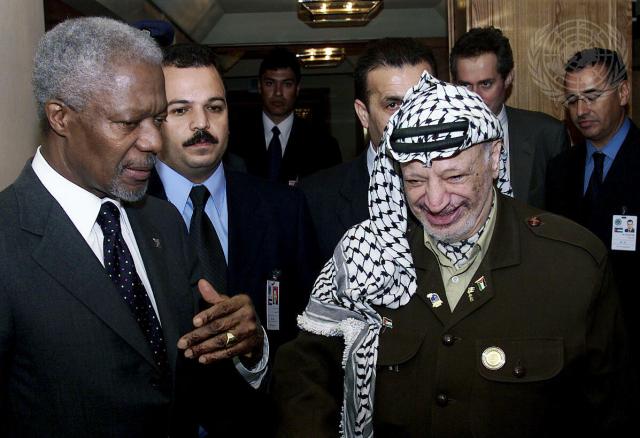
In 2001, with nonstop terrorist attacks coming out of Judea and Samaria, Dichter demanded that Israel build a security fence.
We quickly understood that even if you can block three or four access routes for terrorist attacks, you can’t block them all. After all, the distance between Qalqilya and Kfar Saba is almost nonexistent. The only place where there was a fence was Gaza—and from there they couldn’t launch attacks into Israel.
The late Gideon Ezra, who was head of the Judea and Samaria region in the ISA, didn’t think there was a need for a fence. I said to him, “You’ll see that we will need one in Jerusalem as well.” A lot of people didn’t like the idea, including Sharon. They said, “The fence will be a diplomatic fence.” I said, “It’s a security fence. You decide on the route because it’s impossible that someone can leave Tulkarm and have no problem getting to Netanya.” We saw how easy it was for them to smuggle explosives to Jerusalem.
Q: Didn’t you have intelligence about the terrorist attacks?
A: A terrorist that leaves Tulkarm to carry out an attack needs someone to help him get to Netanya. That’s one person already that knows the secret. If he can’t get to Netanya because of the fence, he needs to first get to Ramallah and from there to Jerusalem. That already requires additional helpers. There are a lot of people in the chain and that makes it easier to find out about the attack. We saw that we were able to prevent attacks, but there were also misses—and the public, the cabinet and the prime minister weren’t counting the attacks we prevented—and rightfully so. The political echelon wanted zero terrorist attacks.
I brought in social workers to work with Shin Bet personnel because the guys were down. I saw they were having a tough time. They were working on preventing terrorist attacks and on TV you would see the results of the attacks. Think about what happens to someone who has prevented four or five attacks, and then suddenly there is one that we’ve missed.
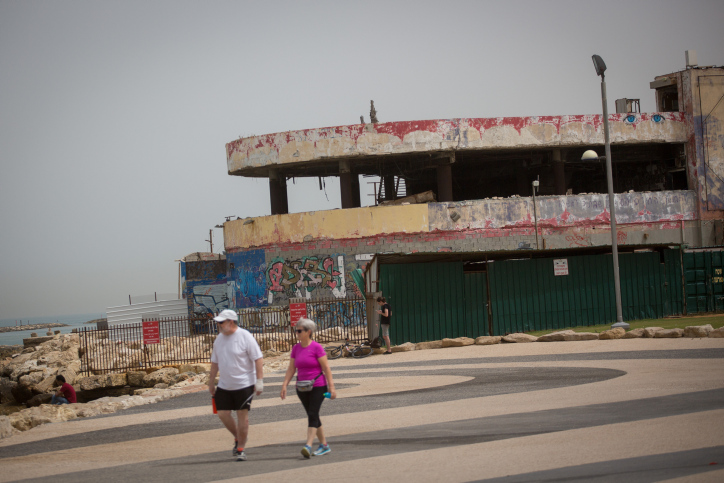
The terrorist attacks were growing more gruesome by the day. On June 1, 2001, 21 Israeli youths were killed in an attack at the Dolphinarium, a discotheque in Tel Aviv. Two months later, 15 people were killed in an attack on the Sbarro restaurant in Jerusalem.
We were chasing from one attack to the next. Our luck was that most of the suicide bombers weren’t hardcore organization members. They were last-minute recruits without any ideological infrastructure. They weren’t skilled, so in a lot of cases they would see the army and head back where they came from, or they would blow themselves up at a checkpoint. The Israeli public has no idea how many thousands of lives were saved that way.
After each terrorist attack, the cabinet or a narrow forum of top ministers would hold a debate about how to respond. The bombing at the Dolphinarium was something else. The result was awful. In a conversation with the prime minister immediately after the bombing, I said, “I suggest we kick the Palestinian Authority out of all its institutions in Jerusalem.” They [the Palestinians] thought that the Orient House, where the PLO had its headquarters, was something like the American Embassy in the city. They were sure we wouldn’t touch it.

During a debate on evicting the Palestinian Authority from Jerusalem, the police said, “We don’t know how to organize such a large force in such a short time.” I said to Sharon that if it didn’t happen in one night, it wouldn’t happen at all. I know the dynamics. Joschka Fischer, who was the German foreign minister, was staying at the David Intercontinental right by the Dolphinarium. The day after the attack, he went to Ramallah and met with Arafat, who put out a very anemic statement condemning terrorism.
‘This is war!’
On Aug. 9, the Sbarro bombing happened. Again, I said to Sharon, ‘We have to finish the Palestinian story in Jerusalem tonight.’ We evicted them from all their institutions in the capital. That was a severe blow to the P.A. I was in touch with Arafat at the time, I was the only one who would go to Ramallah to meet with him on behalf of the prime minister. I remember he said to me, ‘You screwed us real good.’”
One method of dealing with terrorism back then was targeted killings of senior members of terrorist organizations. Masoud Ayyad, an officer in the PLO’s Force 17, was eliminated in February 2001 when a helicopter fired on his car in the Jabalya refugee camp. In July of the same year, Jamal Mansour, the head of Hamas’s political wing in Nablus, was eliminated by the same method. In November, it was the turn of Mahmoud Abu Hanud, the commander of the Hamas military wing in the West Bank.
Targeted killing is an important modus operandi, but it doesn’t solve everything. It requires intelligence, helicopters, drone surveillance, and, at the end of the day, the target needs to agree to go where you want him to be. Connecting between the Shin Bet and an IAF helicopter is like connecting between a heavyweight boxer and a … surgeon.

No matter how much effort we invested, we saw that things weren’t progressing. On the contrary, effectiveness declined because the terrorists figured out that the sound of a helicopter in the air, no matter what kind of helicopter, was a sign for them to hide. Targeted killings that once took us two days to prepare were taking two weeks. There was a case for example of a senior PLO operative in Tulkarm who we had been staking out for three weeks, and in the end, instead of taking him out using a chopper, we got him with snipers.
But the army didn’t have a presence in Area A [of the West Bank]. It didn’t want to operate in the refugee camps and towns. I put the situation to the prime minister. I said, the army isn’t willing to use its tools. At a cabinet meeting when Sharon asked the army to respond they told him, “The tools are designated for war.” The prime minister slammed his fist down on the table and said, “This is war!” Finally, in 2001, the army started to bring tools into Area A and that really improved our capabilities, because you can’t beat terrorism on that scale just with targeted killings. It was clear that we needed to go in and make arrests.

The Nur-Shams refugee camp in Tulkarm was the first project. In early 2002, we sent the Golani Brigade into the camp and it carried out an extraordinary operation. We killed terrorists, we arrested terrorists. That was the first time the IDF changed its modus operandi. After that, there was an operation in the Balata refugee camp carried out by the Paratroop Brigade, which at the time was headed by [current IDF] Chief of Staff Aviv Kochavi. That gave the IDF and its commanders a sense of confidence. They saw it was possible to carry out those kinds of operations.
But terrorism can’t be stopped just with targeted killings and arrests. Lethal terrorist attacks continued to come out of Judea and Samaria one after the other, peaking in March 2002, when 135 Israelis were killed.
The Palestinians became more and more daring. We could prevent four to six terrorist attacks in a day but on the seventh, we wouldn’t succeed and there was a bombing on a bus.
A bunch of guys coordinate the intelligence and send out the operations teams and the army or the police, and together we try to stop a terrorist, and we had people who paid with their lives. In January 2005, one of our case officers in Gaza, Oded Sharon, knew that a terrorist was in a car on the way to Gush Katif. Agents started pulling people out of cars but the terrorists came up behind them and set off his explosives because he knew he wouldn’t reach Gush Katif.
Q: Is that frustrating?
A: Think about guys who missed an attack because of a small delay. I remember one attack where our operatives were right on the tail of the terrorist. It was just like in the movies; they would come to a public telephone and the handset would be hanging in the air, or they would hear an explosion when they were just 200 yards away. They knew who they were chasing after; they just didn’t know where the target was.
Q: How did you cope? It sounds like you were chasing after the wind.
A: There was one thing I made sure to be strict about and that was I would tell people, “I’m going to sleep now, but I warn you if you have mercy on me in the night, I will have no mercy on you during the day.” You have to sleep because we aren’t Superman, but you have to learn to be alert and awake when required to and to take decisions in a split second.
For example, one night, I got woken up because there was an interrogation of a terrorist who had placed a bomb at a bus station in the Dan Region. The bomb was set to go off via a phone call from Nablus in the morning when the buses started to pull out of the station, but at first, we didn’t even know what town or what station. At that time of night, there’s no point in announcing a halt to public transport because nobody will even hear the announcement, and you know that in the morning a bus station is going to blow up.
At about two in the morning, we managed to get our hands on the terrorist. I was woken and told they want to interrogate him as a “ticking bomb.” I had to authorize that he was a ticking bomb. Then the interrogators asked me, “What can we use for the interrogation?” Our secret toolbox is supposed to create the required pressure on the person being interrogated, and he was a ticking bomb in the full sense of the word. We didn’t have a lot of time. In the end, the terrorist told us where the bomb was. And just like in the movies, the security forces got there about half an hour before it was due to explode.
The Americans brought in retired general Anthony Zinni, one of their top negotiators, who shuttled between Ramallah and Jerusalem. They hoped he could calm the situation down and believed that he could persuade Israel that its policy lacked any long-term strategy, and make it clear to the Palestinians that they had made a big mistake when they didn’t accept Ehud Barak’s proposals at Camp David in July 2000.
Zinni spent more than two months shuttling back and forth in a diplomatic process to try and achieve a ceasefire between the sides. He arrived on the night of March 26 and asked us for final approval for his plan. Together with the head of the planning directorate at the time, Giora Eiland, I tried to persuade Prime Minister Sharon that there was no reason not to accept the plan, because we knew that the Palestinians wouldn’t do anything with it….
The same night we informed General Zinni that Israel accepted the plan. He was really happy and said that first thing in the morning we would receive the Palestinian response and a new Middle East would be born. I said to him, “Don’t get up early. They won’t give you an answer.”
At 10 a.m., there was supposed to be a press conference. Everyone was waiting for Arafat. The press conference was postponed until 11, and then again and again. That night was Passover night so we gave him a deadline of three o’clock in the afternoon and we said that if there is no answer by then the press conference would have to be put off until after the holiday. Of course, the response never came, because Arafat was a coward. And the Palestinian Authority paid a heavy price for that cowardice.”
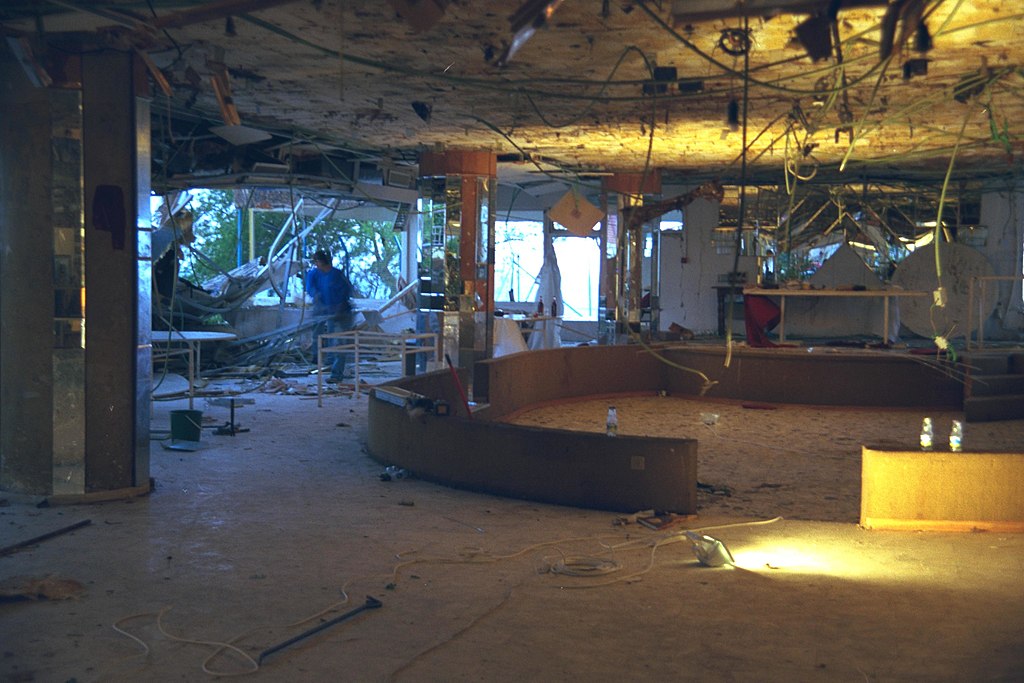
Q: If Arafat had agreed to that plan would things have turned out differently?
A: I can’t say what would have happened, but he didn’t even have the courage to say “yes,” and that night the suicide bomber blew himself up at the Park Hotel in Netanya. By the way, the attack wasn’t planned for Passover night. They didn’t even know that was the date. The investigation revealed that they had planned to hit a mall in Tel Aviv that was closed on the night of the holiday. They wanted to call it off and go back to Tulkarm, but the suicide bomber, who was wearing women’s clothes, said he had once worked at the Park Hotel in Netanya and suggested checking out whether there were people there. When they saw the queue at the entrance the terrorist went inside and blew himself up.
That only shows that Hamas had no interest in Arafat or the diplomatic process. The organization was already so full of itself—and we, unfortunately, didn’t understand just how much and that we were already in a different era. The Park Hotel bombing wasn’t the last attack that month. On March 31, there was a bombing at the Matza restaurant in Haifa. Throughout 2002, 451 people were killed and thousands were injured. Insane numbers. People wouldn’t take the bus, they wouldn’t drive next to buses, hotels were empty. Honestly, there were times when I was surprised just how strong Israelis are.

The Park Hotel bombing was the last straw. On March 29, Israel launched “Operation Defensive Shield.” The IDF forces went into the large Palestinian towns in Judea and Samaria: Ramallah, Nablus, Jenin, Qalqilya, Bethlehem.
We arrested 8,000 people. We recruited everyone who could conduct an interrogation, because that’s how you beat terrorism. You interrogate someone, you get information, you pass that information on to the case officers, who go with it to the army, which carried out the arrests of people on the wanted list. We had over 400 names of suicide bombers we had to locate, people who were only waiting for an explosive device to go and carry out an attack.
‘The Shin Bet doesn’t deal in numbers, it deals in names’
We carried out fewer targeted killings, because with targeted killings you can’t obtain intelligence from the deceased. But when you arrest a terrorist cell and its members know the case against them is sealed, put them in a room and they will talk openly because they know it’s all over.
One of the standout events of “Operation Defensive Shield” took place in Bethlehem on April 2. Some 50 Palestinian gunmen, headed by Abdullah Daoud, the P.A. intelligence chief in Bethlehem held some 200 hostages at the Church of the Nativity in the town, among them, clergy and children. They weren’t only carrying weapons in the church, they had also booby-trapped it.

Sharon was in Washington ahead of a meeting with President Bush. He called me after a meeting with [CIA director George] Tenet, who said that I was the only one who could reach an agreement with Arafat on the Church of the Nativity. I spoke with Arafat at three in the morning. He said to me, “how’s it going?” As if we were on vacation.
It wasn’t an easy conversation. We had a list of 13 wanted people among the hostage-takers that we insisted be deported overseas, and another 26 we wanted to be deported to Gaza. The rest could go home.
The Shin Bet doesn’t deal in numbers, it deals in names. We knew from the intelligence we had that Arafat wanted a different outcome. But I said to him, “I’m not a trader at the flea market.” He replied, “Let’s sleep on it. Perhaps I’ll go down a bit, and you can improve your offer.” I said to him, “Don’t exhaust yourself, it’s not going to change. You can talk about the rest with the president of the United States.”
From the IDF’s perspective, it wasn’t difficult to take over the structure. But it was clear that if we went in there would be widespread destruction because there were explosive devices inside, and at the end of the day we would end up being blamed for the destruction. It was the Church of the Nativity, after all. In the end, it was all over with the numbers we asked for.
‘If it was up to Sharon, he would have buried Arafat’
Another incident in Defensive Shield that has become engraved in the collective memory is the battle for Jenin, in which 23 IDF soldiers were killed, including 13 in a lethal ambush.
There was an IDF force there that unfortunately got caught up in a problematic area. We took heavy casualties and the only way to get them out was to bring in a large number of bulldozers. It wasn’t to take revenge, but the Palestinians published reports about a “massacre in Jenin” and reported hundreds if not thousands of dead. We managed to get our hands on the list of Palestinian casualties. There were 56 dead. We checked who they were and almost all of them were terrorists. That finding took the wind out of their sails and allowed us to continue with the operation. The difference between hundreds of dead and 56 is extreme. Intelligence and defense agencies from around the world came to hear from us how we did it.
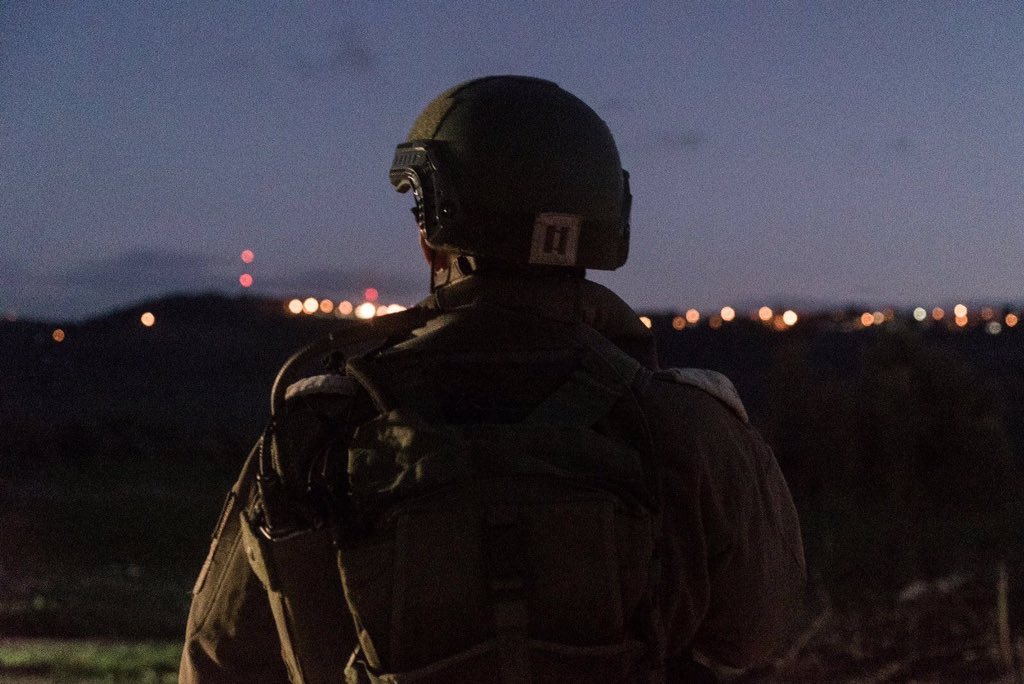
Q: Didn’t Sharon want to deport Arafat as one of the goals of the operation?
A: If it was up to Sharon, he would have buried Arafat in the Mukata’a [the Palestinian headquarters in Ramallah]. His ministers told him that it wouldn’t work, and in the end a decision was taken to leave Arafat alive in a small room. He died in November 2004, before the intifada came to an end. He was replaced by Mahmoud Abbas, a different character but with the same views.
To this day when people tell me that the Palestinian Authority is fighting terrorism, I say yes, but only when it’s important to it and within certain restrictions. It is 28 years since the P.A. was established and not one single terrorist who carried out a terrorist attack, murdered Israelis or planned to murder Israelis has been arrested by the P.A. Not one has been interrogated, had charges filed against him, been sentenced and is sitting in jail.
Judea and Samaria today is far less of a security threat than the Gaza Strip, and Dichter has no doubt that’s thanks to the facts created on the ground by “Operation Defensive Shield.”
People around the world didn’t understand how we managed to eliminate terrorism on such a large scale with only minimal collateral damage to the other side. I explained to anybody interested that we, the Israelis, hit targets, while terrorism hit Jews. That’s the gaping difference. The operation was a victory achieved through Sisyphean work. We started the fighting in tanks and we ended it in jeeps. This shows the confidence of our people.

It took time for the operation to have an effect, but we arrested enormous numbers of terrorists and we gathered a huge amount of information. Names, locations, that we slowly put together. Some people say you kill one and another one arises, but the fact is that the Americans killed Qassem Soleimani [the head of the Quds Force of the Iranian Islamic Revolutionary Guards — E.L.] and he has not been replaced by a figure of the same stature. There were more than 400 suicide terrorists that were arrested and put in jail. You hit the core, and on the other hand, volunteers for terrorist attacks see if you are involved in terrorism, you will either die or be arrested.
Dichter says it would be a “big mistake” to think that the security fence is what eliminated terrorism.
The main sections of the fence were built only after the operation was over. Some people say that operation was the only war that the IDF won since the Yom Kippur War.
Q: Does the fence help maintain security today?
A: The fence changed reality, but once “Operation Defensive Shield” was over and the number of terrorist attacks slowly declined, the status of the fence began to decline as well. Today it is less operational and there are many gaps that allow illegal workers and criminal activity to get through. Some 80 percent of property offenses in Israel come from Judea and Samaria. The fence was built for security purposes but it also served [to fight crime]. And when the security purposes were over, [this aspect was] neglected.
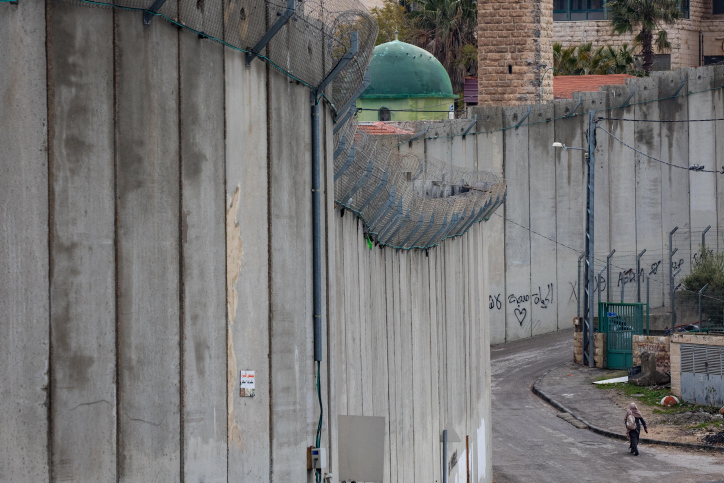
Some people think that terrorism is a switch that you pull down and it’s over. That’s not the way it works. There is a whole panel of switches. We thought the Oslo agreements were the main switch. We brought that down and it transpired that it’s not connected to the other switches. If there is no main switch, that requires a lot of work on our part. A Hamas switch, a PLO switch, Islamic Jihad. The fence is another switch.
Q: Are there things that could have been done differently?
A: There were things that were done too late or that weren’t done at all. The biggest mistake was that we missed an opportunity with the Hamas leadership. Hamas saw that in “Defensive Shield” we hit Judea and Samaria hard; we didn’t just hit Fatah, but the other organizations as well, including Hamas. The senior members of Hamas made the biggest mistake of their lives on Sept. 6, 2003, when they decided to gather to discuss the situation. We got hold of intelligence that they were about to hold a meeting with everyone present, from [Hamas founder] Sheik [Ahmed] Yassin through to Mohammed Deif. The whole senior Hamas leadership. I’m not aware of any similar opportunity.

The problem was that a year earlier, we had taken out Salah Shehade, the head of the military wing of Hamas in Gaza, with a bomb, which because of intelligence problems also hit innocent people. The Air Force’s operations research department said that a one-ton bomb could cause collateral damage. The army got cold feet and persuaded the defense minister, who persuaded Sharon, and we dropped the idea.
‘The story in the Strip won’t end through an agreement’
I said, “Let’s go for a half-ton bomb. The operations research department said there was still a chance of collateral damage. Sharon was presented with threatening scenes of committees of inquiries and human rights. In the end, we decided on a quarter-ton bomb. Unfortunately, all the targets were on a different floor to the one we thought they would be on and they managed to escape. To this day, some of them remain involved in terrorism.
When you’re fighting terrorism, you have to be much more determined. When we eliminated [chief Hamas bomb maker] Yahya Ayyash in January 1996, we knew that Mohammed Deif was his operational patron. A few hours after we eliminated Ayyash, we could have eliminated Deif as well, but we didn’t have authorization from the political echelon. Why? Perhaps they didn’t want to stretch the situation too far.
Q: How can the Gaza problem be solved today?
A: Once in a while, people ask why didn’t we conduct an operation like “Defensive Shield” in Gaza. You have to remember that in 2002, Israel was facing a disastrous economic situation. We had negative economic growth. We were in a deep recession and an operation in Gaza would have required calling up reserves on a similar scale to the Yom Kippur War.
At the time, 90 percent of the terrorist attacks and 90 percent of the casualties resulted from terrorism emanating from Judea and Samaria. So, I think the decision at the time was right, but unfortunately, Gaza has been left untreated, without relating to the processes that are going on there. The Palestinian Authority gave up on Gaza. And the story in the Strip won’t end through an agreement. I wish there was a magician who would find a way to dismantle the terrorist-military infrastructures of Hamas and Islamic Jihad, which are insane.
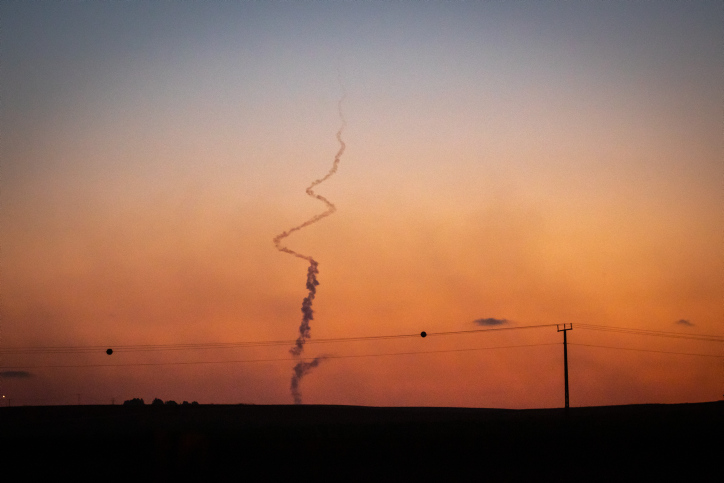
Look at Hezbollah and the Houthis in Yemen, that’s what they have there. And unlike Lebanon, which is a large territory, Gaza is only 360 square kilometers. We won’t be left with a choice… we will have to launch a military operation to destroy the terrorist infrastructure there. To all those that ask, “So will we have to occupy it again?” I say that we didn’t occupy Judea and Samaria in “Defensive Shield.” What we did is create accessibility to every location. That’s the difference. Gaza is a more complicated story on the one hand, but on the other, it is simpler.
Q: What is simpler?
A: Gaza is small, it is enclosed. We can handle it. There are 2.2 million people in Gaza and the problem is first and foremost an economic problem. In Judea and Samaria, the easing of tensions is partly down to the improved economic situation. Almost everything manufactured in Hebron today goes to Israel.

To improve the situation in Gaza, we need to think in terms of economics. Today, Gazans under the age of 35 don’t know what Israel is. It’s a different situation to what used to exist in the past, and now there is a debate over whether we should let workers from Gaza into Israel. If you want to have 200,000 Gazans working in Israel and to improve their economic situation, we need a different reality. We can’t do that when Hamas controls the Strip and has advanced military capabilities. The story with Gaza is a story that Israel will have to solve by force.
Q: There isn’t a single Israeli prime minister who would want to get involved in that kind of situation.
A: If everyone passes the buck to their successor, then in 10 years from now we will find ourselves facing an operation against 3 million Gazans in those same 360 square kilometers. Both our capabilities and theirs will improve. The economic problem will only get worse. Do you want to know what Gaza will look like 10 years from now? Just look at Lebanon today.
This article first appeared in Israel Hayom.


























